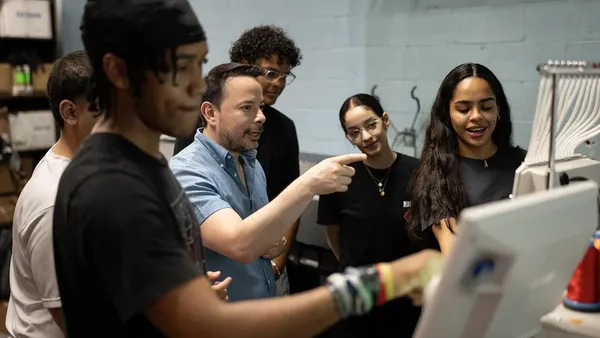Dive Brief:
- Science centers and museums can be good sources of professional development for teachers because they offer programs that align with state standards and allow teachers to experiment with materials themselves before they present new concepts to students, District Administration reports.
- Most science centers are looking for ways to cultivate long-term partnerships with schools and school districts, but administrators need to be clear about their goals before investing in these partnerships and decide whether they are looking for workshops to bolster specific content knowledge or a series of presentations on current STEM pedagogy.
- Some science museums and regional science centers also offer workshops that send specialists to school districts to provide professional development, eliminating the cost and time of travel for school personnel.
Dive Insight:
One of the most exciting school events for students is field trip day — a chance to explore educational concepts in a new environment with visual and tactile elements unavailable in traditional classroom settings. Teachers are students, too, and a “field trip” can be a great way to enhance the professional development of teachers, especially in STEM fields. The experience cannot only provide a deeper level of knowledge about new science concepts and new pedological practices, but it can also inspire and engage teachers in a way that will reflect in their classroom teaching.
Science museums are often considered a valuable field trip experience, but are sometimes overlooked as a source of professional development for teachers. However, these sites often have the perfect combination of staff members and site resources to support PD. The cost is often reasonable, especially if administrators establish long-term relationships with science museums, and grants for professional development are sometimes available. Science museums also offer other educational benefits, such as free teacher resources, lesson plans, and curriculum offerings that can be used in the classroom.
There are other sources of STEM professional development and teacher resources that are also sometimes overlooked. National parks often offer such programs. And companies such as Microsoft have a vested interest in providing STEM resources to teachers of the next generation of employees and innovators.





 Dive Awards
Dive Awards



